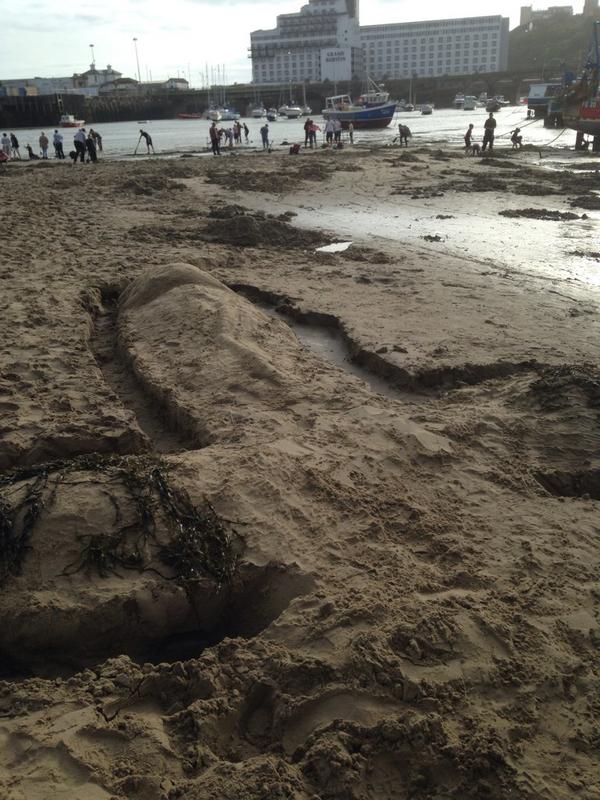Art & Exhibitions
Artist’s Buried Treasure Attracts Gold-Mad Hordes (UPDATED)
Michael Sailstorfer's installation promises to make you rich.
Michael Sailstorfer's installation promises to make you rich.
Alexander Forbes

Hundreds of people swarmed a British beach on Thursday in an attempt to find 30 gold bars buried by Berlin-based artist Michael Sailstorfer. Each of the 24-carat bars weighs approximately 12 grams—about the weight of a large coin—and is about an inch long. They are worth a combined £10,000 ($16,600), the Guardian reports. Sailstorfer placed them on a portion of the Folkestone beach, which is submerged during high tide. And despite an estimated 500 people turning up to dig during low tide on Thursday, not a single bar has reappeared.
Sailstorfer’s project is part of the Folkestone Triennial, which opens this weekend. According to triennial curator Lewis Biggs, who spoke with the Guardian, participants were “of all ages. Some very professional with their metal detectors and others just families with kids enjoying themselves.” He explained that there is no obligation for finders to report discovering a gold bar, so it’s possible some were recovered. “It’s designed as a temporary event, but it could go on forever,” he explained.
Biggs classified the piece as “a kind of land art.” For his part, Sailstorfer was reportedly as interested in participants playing and digging in the sand as he was in the economic implications of his piece. Sure enough, some makeshift sand art—including an obligatory penis—popped up on the beach as the day progressed.

Some “art” created on the Folkestone Beach during the treasure hunt
Photo: @LiamReardon via Twitter
Some participants could be seen digging shoulder-deep in the sand. A surprising number brought along full-size shovels and were searching tirelessly, raising concerns about the work’s insensitivity to the economic hardships currently being suffered in the region.
Responding to those concerns, Biggs told the Guardian:
Well I have thought that quite a lot, I have to say. The thing is, the people are doing it for fun basically. Of course, there are the serious ones with the metal detectors–but if they have metal detectors, then, they’re probably not that hard up. But it’s mostly families doing it for fun.
According to reports, the best items found thus far have been a “pretty shell” and a some disappointing rocks that had looked to be about the right size and shape for a small piece of bullion. It leads one to wonder whether the bars were buried too shallowly and got washed away overnight, making all that digging little more than an excuse for some decent exercise on one of summer’s last days.
UPDATE: According to a subsequent report in the Guardian, the first piece of gold has been found by a family who wishes to remain anonymous. Unconfirmed rumors circulating suggest that three other bars may have been found. The project’s commissioner, Claire Doherty of the Situations art group also released further details about the 30 bars themselves, for any potential prospectors out there: they come in two sizes, some worth £250 and others worth £500.